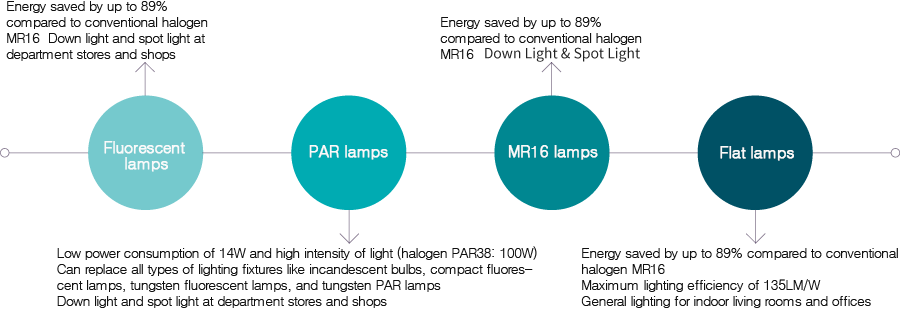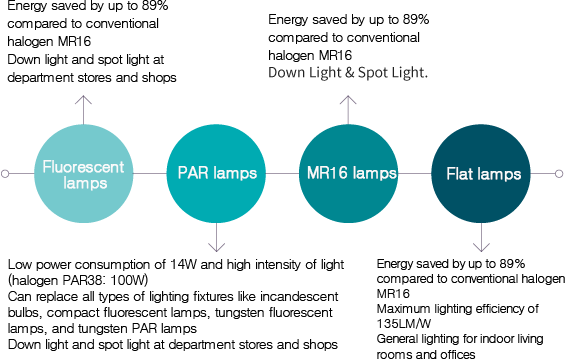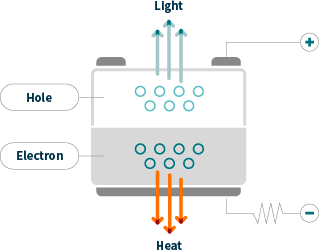LED Lighting
Light Emitting Diode Lighting


Application Effects
Long service life and maintenance-free
- Long service life of about 50,000–100,000 hours
- Long-lasting brightness of light without flickering
Eco-friendly product
- Free of pollutants because of no mercury and discharge gas
- Reduction of carbon dioxide formed during electricity generation
Low power consumption
- Power consumption 80% lower than incandescent lamps and 30% lower than fluorescent lamps
- Low heat value and energy use because of no filament compared to ordinary bulbs
Creation of natural colors with high color rendering
- Use of RGB colors to create all colors by combining light rays
Reduction Principle
LED comprises two semiconductor compounds with positive (+) and negative (-) electric properties.
It has a structure with thin layers formed by the negative (N) semiconductor that has many electrons
and the positive (P) semiconductor that has many holes, which are opposite to electrons.
When voltage is applied, electrons in the N layer move to the P layer to combine with holes and generate energy.
With such characteristics, LED converts 98% of energy into light. Such a high efficiency can save energy.
It has a structure with thin layers formed by the negative (N) semiconductor that has many electrons
and the positive (P) semiconductor that has many holes, which are opposite to electrons.
When voltage is applied, electrons in the N layer move to the P layer to combine with holes and generate energy.
With such characteristics, LED converts 98% of energy into light. Such a high efficiency can save energy.





